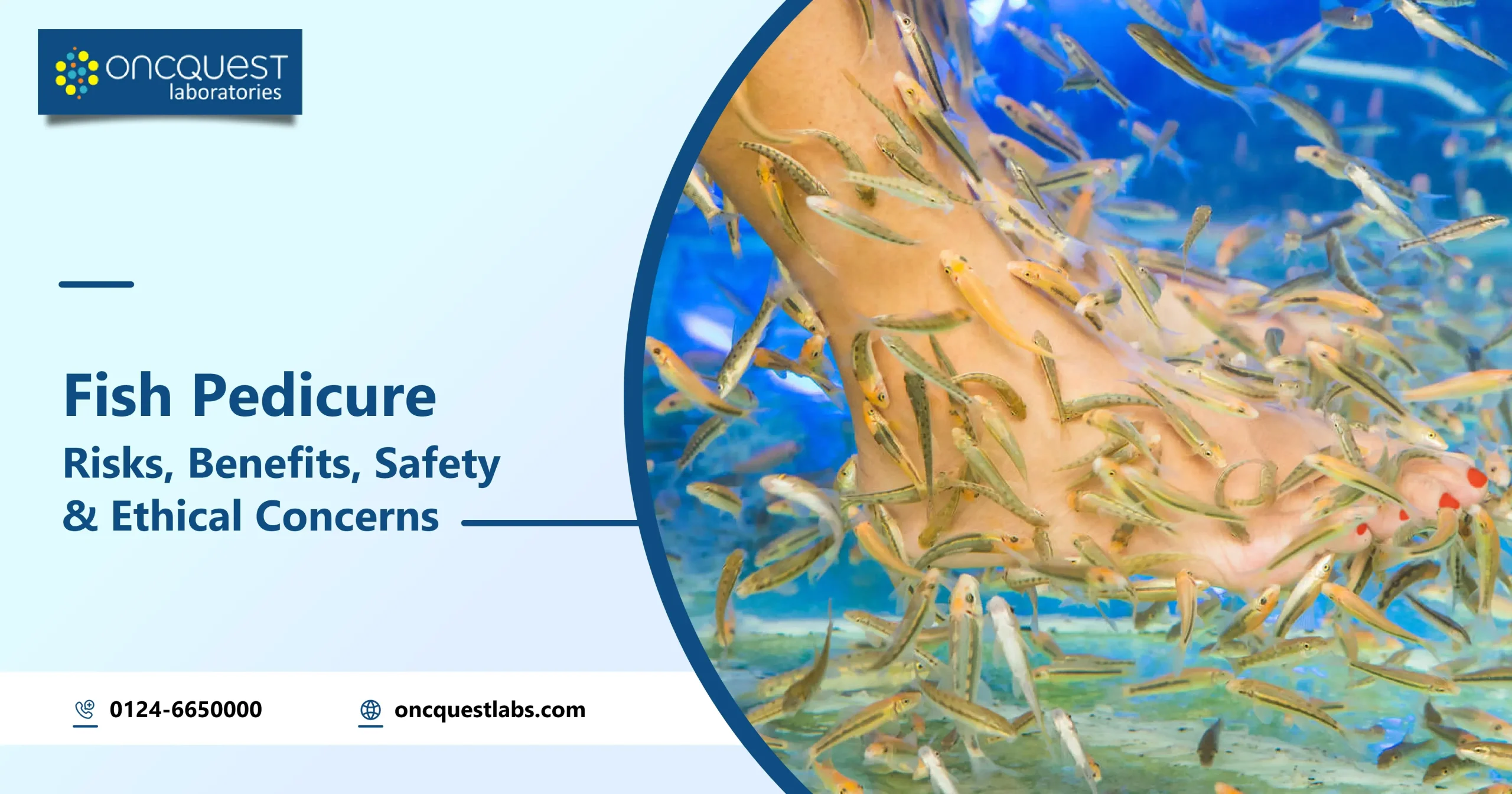Fish pedicures, a unique spa treatment that involves small fish nibbling away dead skin from one’s feet, have gained popularity in recent years. While touted for their exfoliating benefits and relaxing experience, fish pedicures come with their own set of risks, potential benefits, safety considerations, and ethical concerns. This article aims to provide an in-depth exploration of the world of fish pedicures, shedding light on the various aspects that individuals should be aware of before indulging in this distinctive beauty treatment.
Contents
- 1 Understanding Fish Pedicures
- 2 Benefits of Fish Pedicures
- 3 Safety Considerations
- 4 Ethical Concerns
- 5 Navigating Fish Pedicures Responsibly
- 6 Global Perspectives and Varied Regulations
- 7 Evolving Trends: Alternatives and Innovations
- 8 Responsible Tourism and Cultural Considerations
- 9 Public Awareness and Advocacy
Understanding Fish Pedicures
Fish pedicures involve immersing one’s feet into a tank filled with Garra rufa fish, also known as doctor fish or nibble fish. These small fish, originating from the Middle East, are known for their ability to nibble on dead skin cells, leaving the skin smoother and softer. The treatment is often marketed as a natural and rejuvenating alternative to traditional pedicures.
Benefits of Fish Pedicures
Exfoliation: The primary purported benefit of fish pedicures is exfoliation. The gentle nibbling action of the fish is believed to remove dead skin cells, leaving the feet feeling smoother.
Stimulation of Reflex Points: Some proponents of fish pedicures claim that the nibbling action may stimulate reflex points on the feet, potentially providing therapeutic benefits and improving overall well-being.
Relaxation: Many individuals find the sensation of fish nibbling on their feet to be relaxing and enjoyable, creating a unique spa experience.
Safety Considerations
While fish pedicures may offer certain benefits, it’s crucial to be aware of potential risks and safety concerns associated with this unconventional treatment:
Infection Risk: Fish tanks used in pedicures can harbor bacteria and other microorganisms. If the water is not properly filtered and sanitized, there is a risk of bacterial infections.
Open Wounds and Cuts: Individuals with open wounds, cuts, or infections on their feet are advised to avoid fish pedicures. The nibbling action of the fish may introduce bacteria into the wounds, leading to infections.
Skin Conditions: People with certain skin conditions, such as psoriasis or eczema, should consult with a healthcare professional before undergoing a fish pedicure. The treatment may exacerbate existing skin issues.
Regulatory Concerns: In some regions, the use of fish for pedicures may be subject to regulatory concerns. Health authorities may have specific guidelines or restrictions to ensure the safety and well-being of individuals undergoing this treatment.
Allergic Reactions: Individuals with allergies to fish or seafood should exercise caution. While the fish used in pedicures are not typically consumed, contact with them may trigger allergic reactions in some cases.
Ethical Concerns
Apart from safety considerations, there are ethical concerns associated with fish pedicures that deserve attention:
Fish Welfare: The well-being of the fish used in pedicures is a significant ethical consideration. Questions arise about the living conditions, stress levels, and overall welfare of the fish in the confined spa environment.
Sustainability: The demand for Garra rufa fish for pedicures has raised concerns about the sustainability of their populations in the wild. Overharvesting or unethical breeding practices may have negative implications for the species.
Alternative Methods: Critics argue that alternative, non-animal-based methods for achieving smooth and healthy skin should be explored. The use of mechanical exfoliation or other cruelty-free practices may offer similar benefits without ethical concerns.
For those still interested in experiencing a fish pedicure, it’s essential to navigate the process responsibly:
Choose Reputable Establishments: Select spas or salons with a reputation for cleanliness and adherence to safety regulations. Ensure that the establishment follows proper hygiene practices and regularly sanitizes the fish tanks.
Check for Health Certifications: Verify that the spa or salon holds the necessary health certifications and complies with local regulations regarding fish pedicures.
Consult a Healthcare Professional: If you have underlying health conditions, skin concerns, or are unsure about the safety of fish pedicures for your specific situation, consult with a healthcare professional before undergoing the treatment.
Be Mindful of Fish Welfare: Inquire about the sourcing of the fish and the conditions in which they are kept. Choose establishments that prioritize the welfare of the fish and adhere to ethical practices.
Consider Alternatives: Explore alternative beauty treatments that achieve similar results without the use of live animals. Mechanical exfoliation, scrubs, and other cruelty-free options may offer a more ethical choice.
Expanding on the nuanced aspects of fish pedicures, it’s essential to delve deeper into the global perspectives, ongoing debates, and emerging trends associated with this unique beauty treatment.
Global Perspectives and Varied Regulations
Fish pedicures have gained popularity in various parts of the world, and the regulatory landscape governing this industry varies significantly. Some regions have embraced fish pedicures as a novel spa experience, while others have expressed concerns about hygiene, safety, and animal welfare.
In the United States, certain states and municipalities have banned or heavily regulated fish pedicures due to public health concerns. Health authorities cite the potential transmission of infections and the challenges in maintaining proper water hygiene in the fish tanks. Conversely, in countries like Japan and Turkey, fish pedicures are more widely accepted and integrated into spa services.
These varying perspectives highlight the need for standardized guidelines and regulations to ensure consistent safety measures and ethical practices across the industry. Global health organizations and regulatory bodies could play a pivotal role in establishing standards for fish pedicures, taking into account both human safety and animal welfare.
Evolving Trends: Alternatives and Innovations
As awareness of the ethical concerns surrounding fish pedicures grows, there is a noticeable shift towards alternative treatments and innovations within the beauty industry. Spa-goers and beauty enthusiasts are increasingly seeking cruelty-free and sustainable options that align with their values.
Mechanical Exfoliation: Mechanical exfoliation methods, such as foot scrubs and pumice stones, have become popular alternatives to fish pedicures. These methods offer effective dead skin removal without relying on live animals.
Vegan and Cruelty-Free Spas: The rise of vegan and cruelty-free beauty practices has led to the establishment of spas and salons that exclusively offer animal-friendly treatments. These establishments focus on using plant-based and synthetic alternatives to achieve desired beauty outcomes.
Innovative Technologies: Advancements in beauty technology have paved the way for innovative treatments that emulate the effects of fish pedicures without involving live animals. Automated exfoliation devices and specialized skin treatments provide spa-goers with a range of cruelty-free options.
Responsible Tourism and Cultural Considerations
In regions where fish pedicures are deeply rooted in cultural practices, it’s essential to approach the subject with sensitivity. Understanding the cultural significance and historical context of these treatments can foster respectful discussions about potential modifications or improvements.
Responsible tourism initiatives also play a role in shaping the way fish pedicures are offered to visitors. Encouraging ethical practices in tourist destinations, including proper fish care and adherence to hygiene standards, can contribute to a more sustainable and humane industry.
Public Awareness and Advocacy
The intersection of public awareness and advocacy has become a driving force in shaping ethical consumer choices. Social media platforms, environmental organizations, and animal rights groups play a crucial role in educating the public about the potential drawbacks and ethical concerns associated with fish pedicures.
As consumers become more informed, there is a growing demand for transparency within the beauty industry. Spas and salons that prioritize ethical practices and animal welfare are celebrated, while those that fall short may face public scrutiny. This dynamic encourages businesses to reassess their practices and align with evolving ethical standards.
Conclusion
Fish pedicures, with their unique blend of benefits, risks, and ethical considerations, require careful consideration before participation. As with any beauty treatment, individuals should prioritize their safety, well-being, and the ethical treatment of animals. By understanding the potential risks, embracing the benefits in moderation, and making informed choices, individuals can navigate the world of fish pedicures responsibly. Ultimately, personal well-being and ethical considerations should guide decisions related to beauty treatments, ensuring a harmonious balance between self-care and ethical consciousness.





